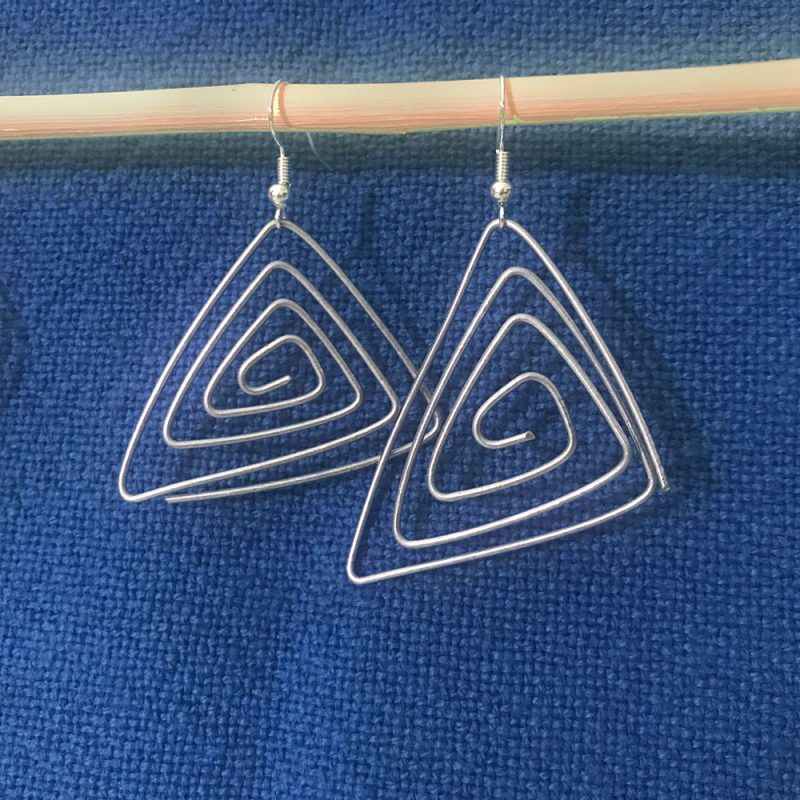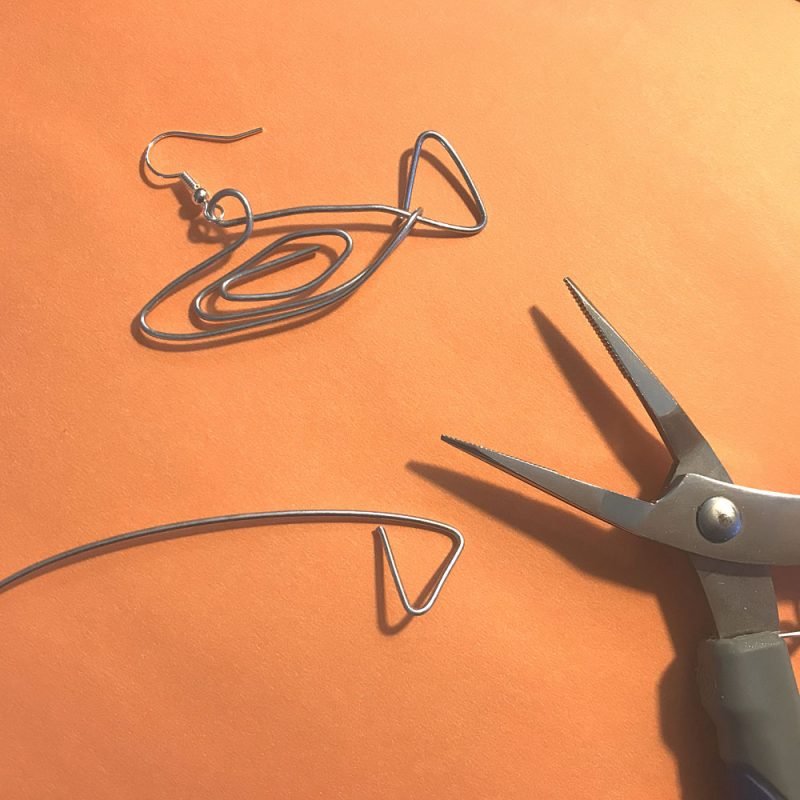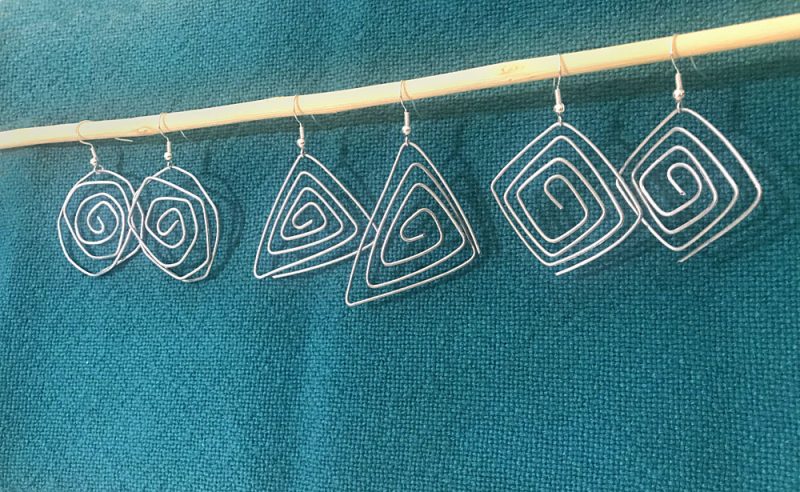DIY Wire Earrings
If you have never made jewelry before, then this how to post is for you. Wire earrings are quite simple to make and we love these earrings fashioned from wire. You can make these from sterling silver wire available from craft stores or the internet. However, we made these simple earrings using 18 gauge galvanized wire, which is very inexpensive and available from any hardware store. Paired with silver fishhook earwires, they are really stunning.
Once you have mastered some simple shapes like a square, triangle and irregular circles, be bold and try other shapes. We are working on a new pair of wire fish earrings, shown below. One of the favorite things about working with wire is that we don’t feel like it is necessary to make earrings in a set match precisely. We actually love the fact that they are a bit different, showing a little artsy flair.
How to Make Wire Earrings
When choosing which wire to use, keep in mind that smaller gauge wire is actually a thicker wire. For example, 24 gauge is rather thin, 18 gauge a bit thicker and 16 gauge even fatter. We prefer the 18 gauge to start with. Also note that silver wire is a softer wire and more elegant. So, if you are just experimenting to start you may want to get less expensive galvanized wire, but be sure to use silver earwires to go in the ear. We used 21mm short fishhook wires. You can use any needlenose pliers or get smaller jewelry pliers.

Materials
- Spool of wire
- Needlenose pliers
- Silver fishhook earwires

Directions
- Cut two lengths of 12″ wire for each pair of earrings.
- Using the pliers, grab one of the ends of the wire and gently bend the wire with your fingers while grasping the wire with the pliers. As you work your shape, after each bend, move the pliers to a new spot, then bend again. You will be working from the center out.
- Once finished with an earring, slide an earwire onto the earring. This can be secured to the selected spot using a dot of household cement or other appropriate adhesive.
Sharon Pierce McCullough

